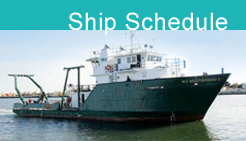Deep Sea Fish and Sediment Surveys in the Gulf
2014 Karenia brevis bloom timeline
(Written by S. Cullum, C-IMAGE, Teacher at Sea, 8/8/14 18:30 pm)
Starting July 9th, FWRI’s Fish and Wildlife hotline received reports of fish kills, mostly of benthic reef fish (e.g. goliath, gag, and red grouper, snapper, hogfish, grunt, triggerfish, etc.) and crabs. They also had reports of discolored water. These reports are continuing.
On July 23rd, law enforcement officials along with Fish & Wildlife Health staff sampled water quality approximately 40 miles west of Hernando County.
A surface bloom patch was detected approximately 80 miles long and up to 50 miles wide, 40 to 90 miles offshore between Dixie and Pasco counties. A presence of Karenia brevis was confirmed in surface water and at depth. Through continuous satellite imagery and water sampling, bloom concentrations are being monitored.
Blooms of the Florida red tide are naturally occurring. They develop off shore in the Gulf of Mexico during the late summer and early fall. Physical conditions in the gulf are keeping the surface bloom offshore at present. The extent of its intensity and size of the current bloom is notable. Stronger than normal circulation in the northeast Gulf of Mexico is likely the cause of the bloom spread along the surface.
Historically, the last extensive offshore and benthic community die-off due to red tide occurred during 2005. The last extensive red tide was in 2012 and 2013, when a bloom persisted in southwest Florida between October and April.
YOU CAN HELP AND STAY CONNECTED!
• Check status reports at MyFWC.com/RedTide for information and interactive Google Earth maps.
• Call 866-300-9399 for a recording.
• Report observations of fish kills to the hotline at 800-636-0511. Injured or dead sea turtles or manatees should be reported to 888-404-3922.
• For daily beach conditions, check the Beach Conditions Reports at mote.org/beaches
• For public health related inquiries, contact the Florida Department of Health.
• Follow FWC’s red tide work at Facebook.com/FLHABs
I would like to thank Sue Murasko with FWRI for providing this invaluable information.
| Print article | This entry was posted by greely on August 10, 2014 at 11:38 am, and is filed under Oceanic Updates. Follow any responses to this post through RSS 2.0. You can leave a response or trackback from your own site. |

